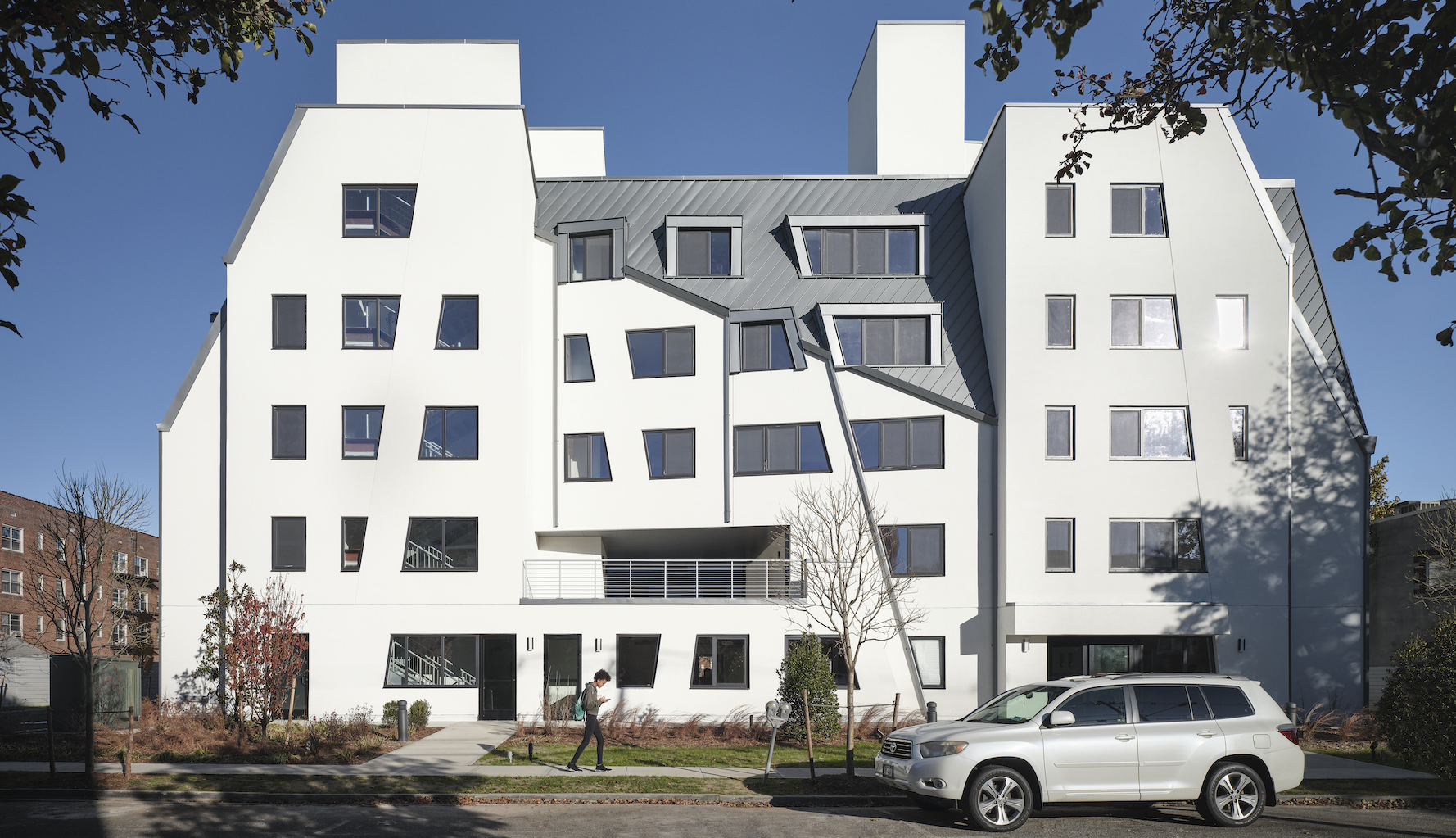The United States is growing old, fast. From 2010 to 2020, the U.S. Census Bureau estimated that the population over the age of 65 grew to nearly 56 million people, or just under 17 percent of the national population, up from 13 percent in 2010. Senior citizens, a group often relying on limited incomes and burdened with mounting medical bills, are particularly vulnerable to sliding into poverty and homelessness. The Allan and Geraldine Rosenberg Residence, an affordable senior housing facility in the village of Freeport, New York, designed by Studio Libeskind for community services nonprofit Selfhelp, is a welcome response to this escalating situation.
Selfhelp was founded in 1936 to aid those fleeing persecution in Nazi Germany and remains the largest provider of comprehensive services to Holocaust survivors in North America. It currently owns and operates 17 affordable apartment buildings in New York City and Long Island, and, combined with other services, supports some 25,000 elderly and vulnerable state residents.
Completed in September, the Rosenberg Residence rises five stories and comprises 44 one-bedroom units and a single two-bedroom unit for the live-in superintendent. Residency is exclusively for the area’s low-income senior population, and 30 percent of those units will be reserved for disabled formerly homeless seniors; a caveat that also tapped funding from the Empire State Supportive Housing Initiative.
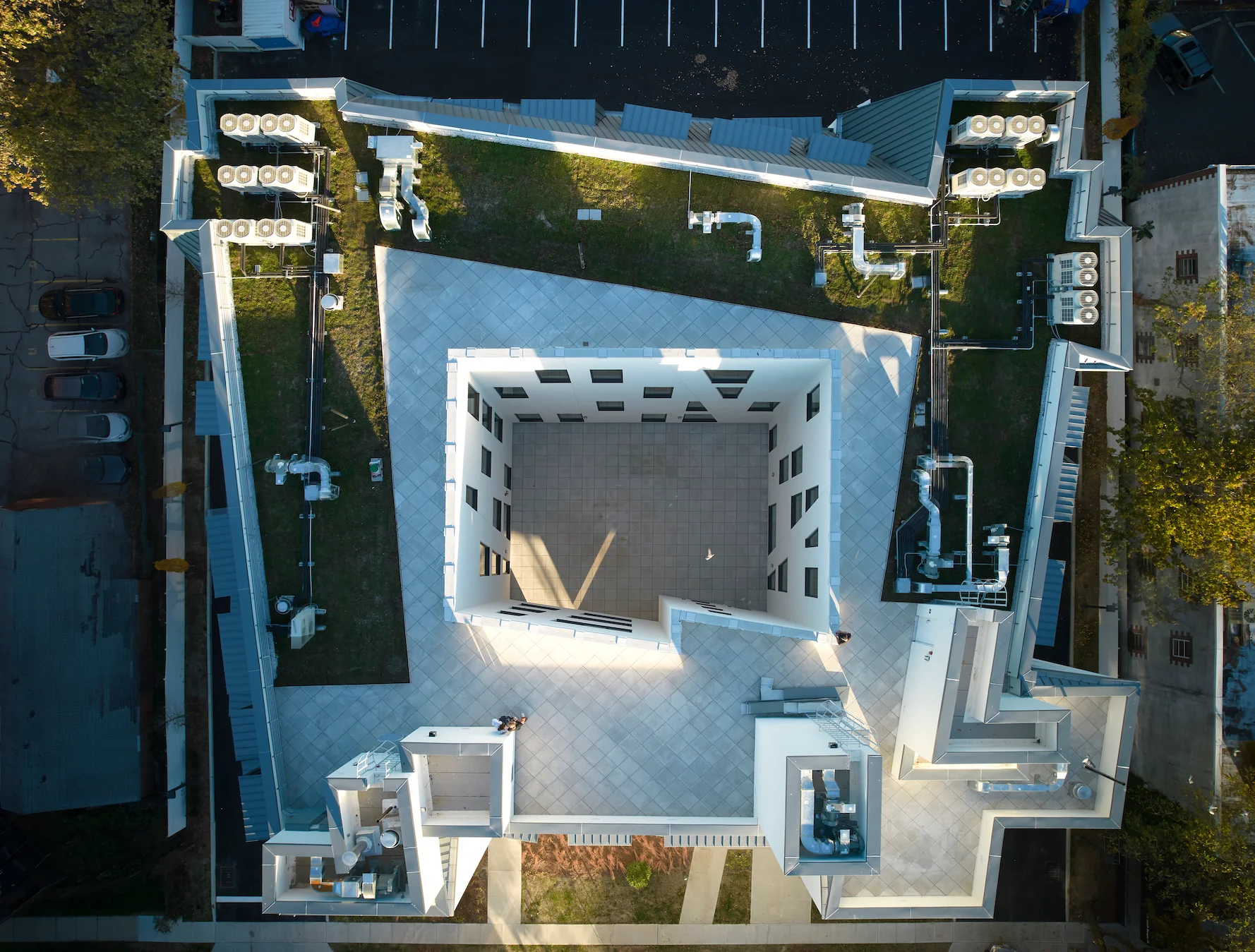
The supportive housing facility is centered on a courtyard. Photo © Inessa Binenbaum
The Rosenberg Residence is located within the town of Hempstead’s Golden Age zoning district, which requires that all new construction be built as for-sale units with a maximum allowable density of 50 dwelling units per acre—legally, the site, measuring just two-thirds of an acre, would max out at 33 units—and 1.25 parking spaces per unit. According to Studio Libeskind partner Carla Swickerath, the project design team and Selfhelp, in close collaboration with the Freeport Mayor’s Office and Zoning Board and other local agencies, sought and received three variances to permit a greater residential density, the right to let the apartments, and a reduction to just 10 resident parking spaces for the facility.
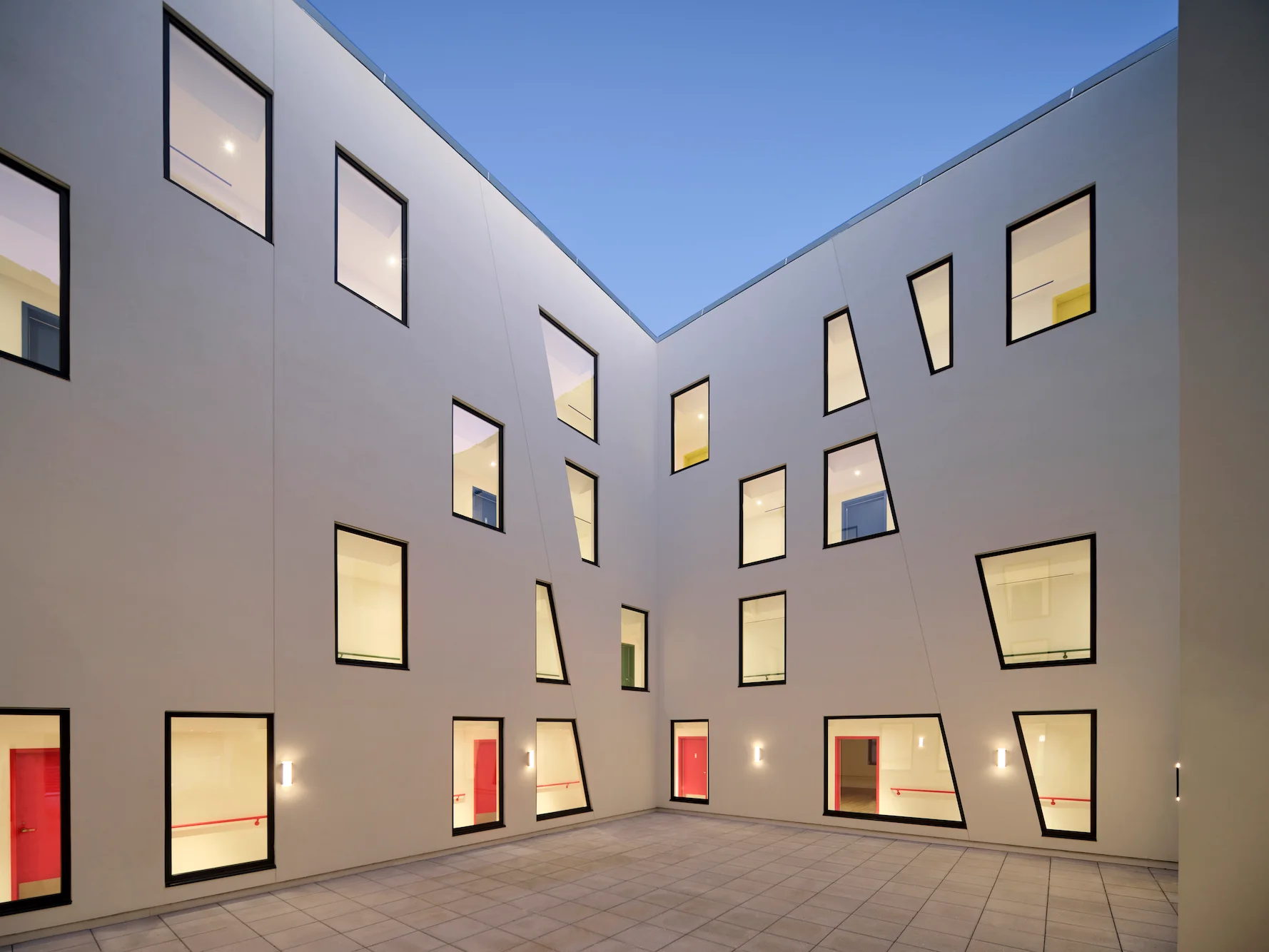
Single-loaded corridors are naturally lighted by the courtyard. Photo © Inessa Binenbaum
The design is very much a product of Studio Libeskind, with the roof and wall lines zigging and zagging to the summit as an abstract metal-clad mansard roof. While the result is fairly eye-catching, one can’t help but wonder whether those moments are wholly appropriate here—the price tag for the project was $25 million, or approximately $550,000 per unit. However, the building does shine in both its layout and program; it’s arranged as a courtyard building with single-loaded corridors day lit by expansive windows that face the multistory space. The use of single-loaded corridors, coupled with the color coding of each individual floor, serves to aid residents, some with dementia, to navigate the building. On the second floor, an opening within the building mass accommodates a patio and breezeway for the courtyard.
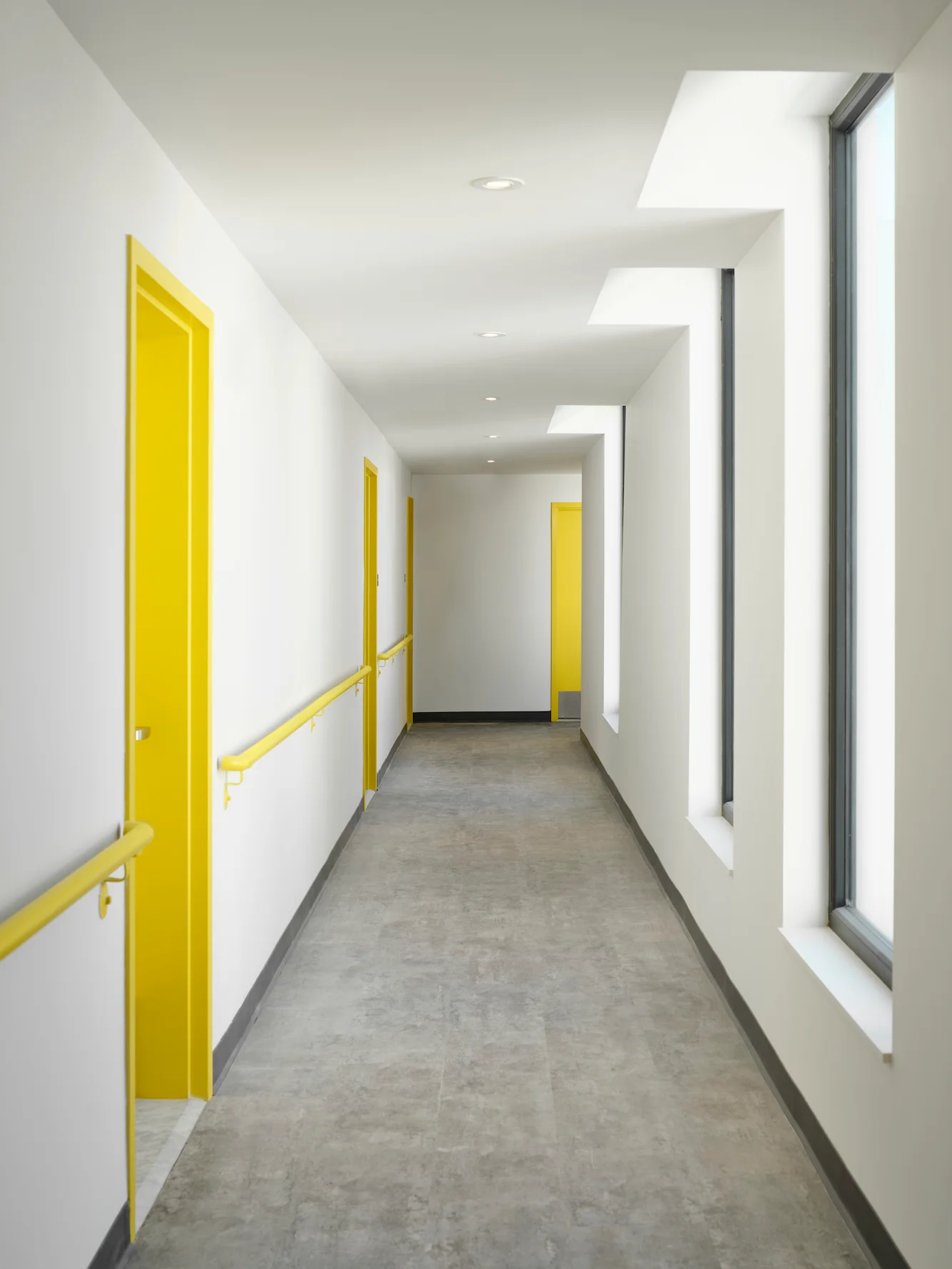
1
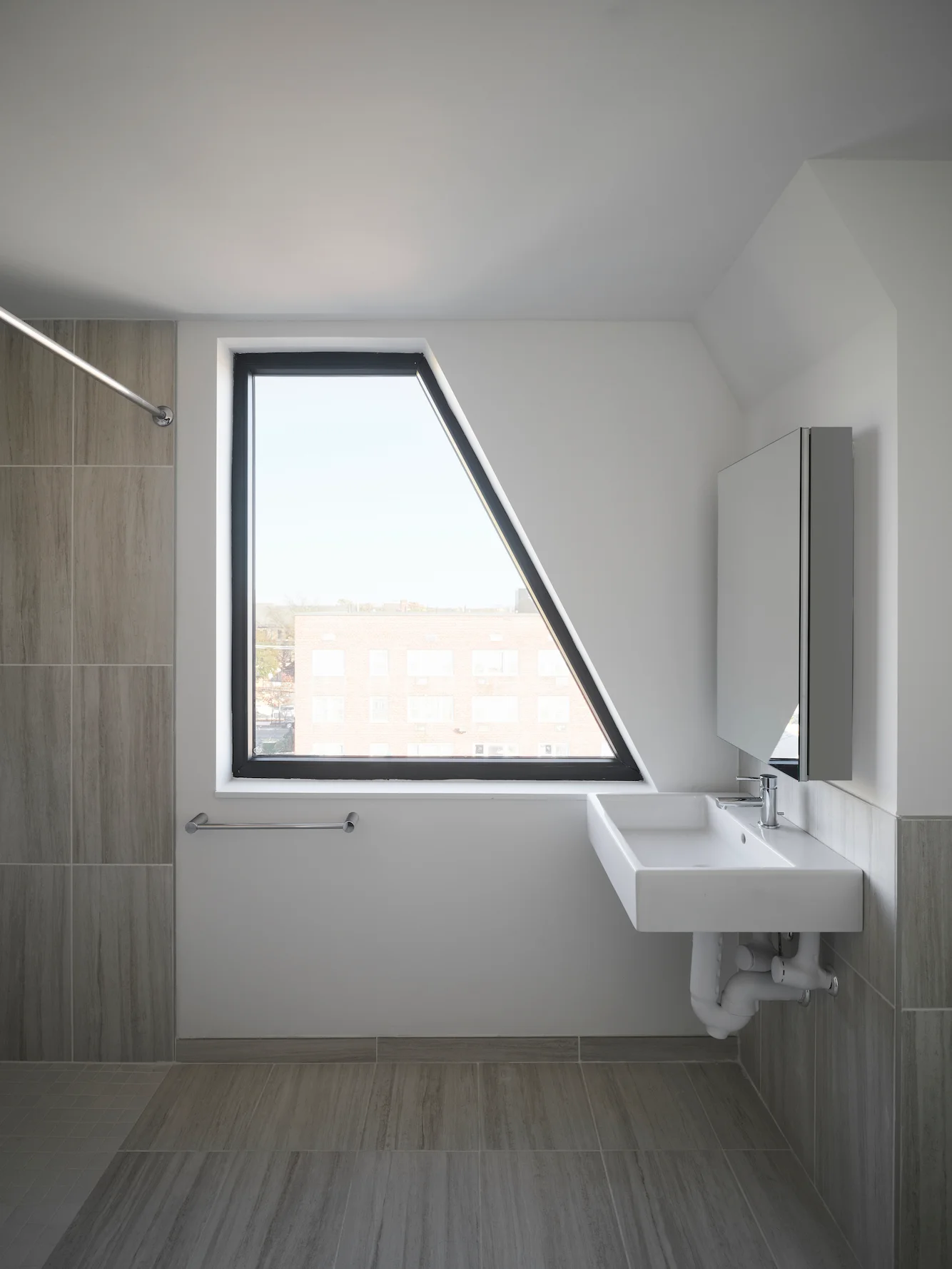
2
Each floor is color-coded (1); view of unit bathroom (2). Photos © Inessa Binenbaum
Communal amenities at the building, which offers its residents a full spectrum of supportive services along with educational and wellness programming, include a recreational rooftop terrace and walking track, a light-filled laundry room, and a multipurpose community and computer room.
The Rosenberg Residence also strives to be green, meeting conformance with the New York State Energy Conservation Code, as well as the Energy Star Multifamily High Rise and Enterprise Green Communities’ program. To reach that end, the design team incorporated several passive house design elements, such as high-performance windows and a thoroughly insulated facade, along with energy-recovery ventilation and a variable refrigerant flow system. Additionally, the building is entirely electric, including electric water heaters and ranges, and water usage is kept in check with EPA Watersense–qualifying plumbing fixtures. All in all, the design team aims for building performance to be 15 percent more efficient than existing ASHRAE standards, and energy usage will be monitored and optimized through Brightpower’s MOBIUS Energy Management System.
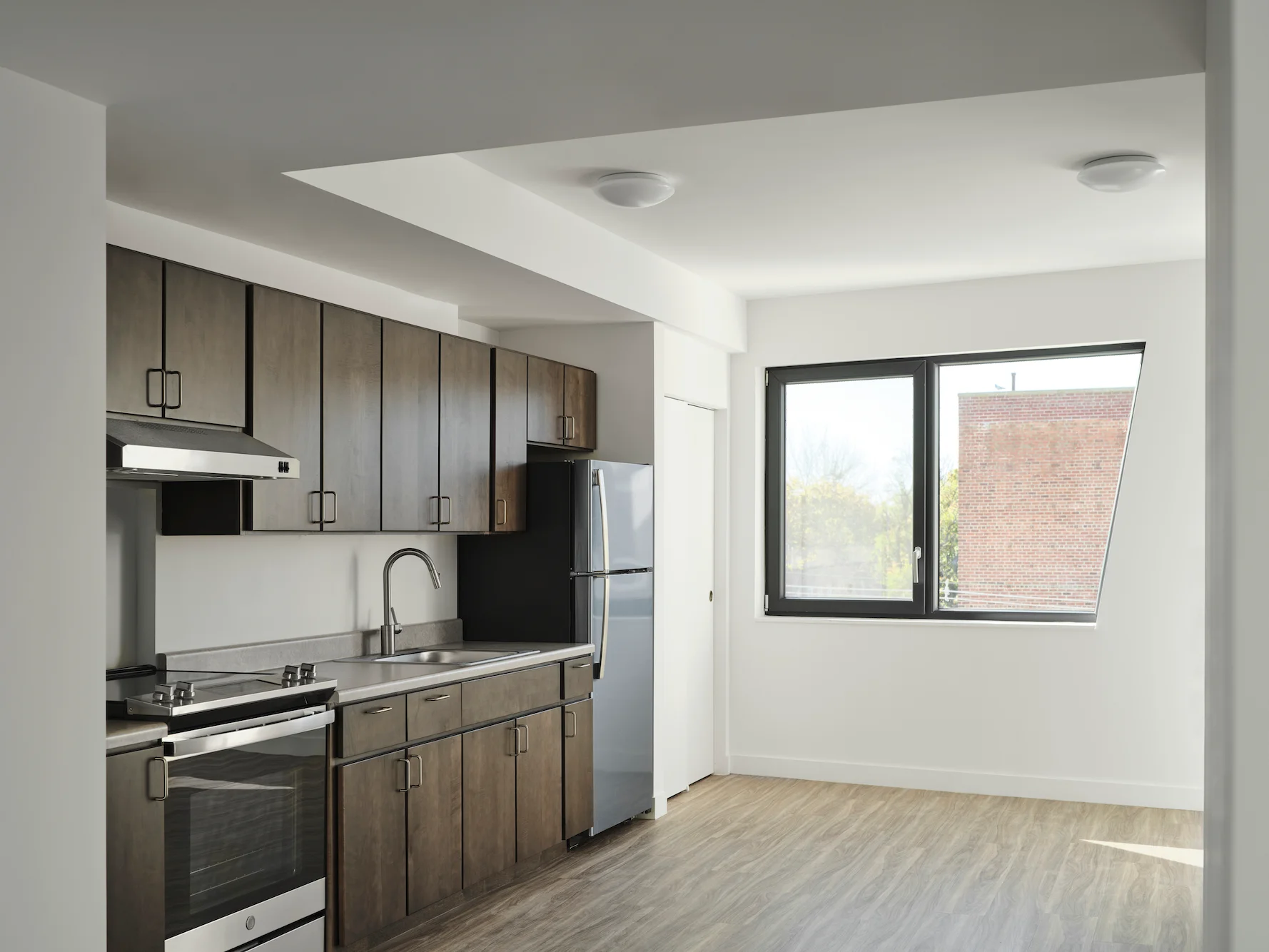
View of kitchen in one of the 44 units. Photo © Inessa Binenbaum
The project is Studio Libeskind’s first completed building in New York. The firm is currently collaborating with Selfhelp on another senior housing facility in the Brooklyn neighborhood of Bedford-Stuyvesant that is set to open later this year, marking the firm’s first completed project in New York City.
